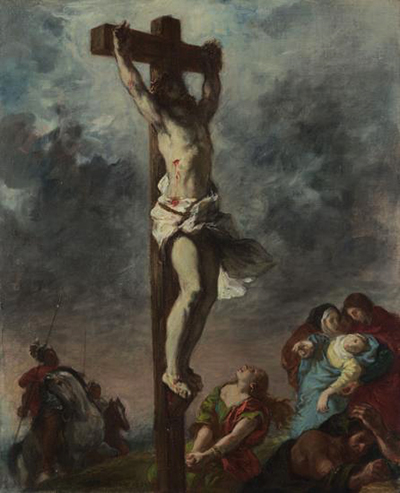The painting of Christ on the Cross by Eugène Delacroix has been admired the world over by art lovers, was created in 1846 and now resides in the Walters Art Museum in Baltimore.
It was enthusiastically received at the first showing in the Paris Salon in 1847 where it was compared by art critics to the Crucifixion scenes of Rubens, the Flemish master painter. The painting shows a stark image of Christ with a darkening sky and a handful of spectators on one side and two Roman soldiers on horseback. The painting evokes a bleak and compelling scene as some of the spectators are seen to gesture at the despondent figure on the cross.
Although not of a religious persuasion, Delacroix was attracted to the dramatic scenes and subject matter of Christ's passion, and this may have been in part due to his own crisis of faith, and he went on to paint a number of scenes from the new testament. Delacroix was one of the French Romantic School of painters and his expressive brushwork and use of colour had a significant impact on the impressionist movement, and Delacroix in turn was inspired by Rubens and the Venetian Renaissance painters.
The painting is an oil on canvas and shows elements both of the neoclassical style and some of the romantic traits of colour and form, and it depicts the ability of Delacroix to portray a vivid sense of pathos through his painting and techniques. The subject matter, themes and style of the artist very much influenced his techniques and were taken from Romantic styles as well as the Oriental and some of these influences were a product of cultural changes in the era he lived in as it moved from the Enlightenment to the Romantic period.
Like many paintings by this artist Christ on the Cross merits deeper study and observation to fully appreciate the way the artist has captured the moments leading up to Christ’s death in an emotive and vibrant way, not least the mood created by the ever darkening skyline.




